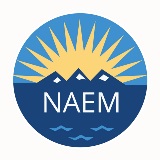When it Comes to ESG Metrics, Materiality Matters

NAEM: When Ceres started out, it was one of the first attempts to use metrics as a foil against environmental disaster. Why did you think that data could help prevent another oil spill?
MT: Around the time of the Valdez oil spill, it was unheard of to have a conversation about environmental performance at the board level. One of the things this effort at transparency did was take accountability to the highest level of the company. You can never tell how many disasters transparency prevents but when you have that disclosure, you have accountability and if you have accountability, you have an effort at performance and a strive for a common goal. And before Ceres, we didn't have that.
NAEM: GRI was a game-changer, but a decade later, many publicly traded companies still don't disclose environment, social and governance (ESG) information. Do you think this will change? If so, why?
MT: More has happened in the last three years than in the previous twenty, combined. When I started twenty years ago, less than one in every $20 of assets under management looked at environmental performance. Now, with the proliferation of investment vehicles such as the Dow Jones Sustainability Index, one of every 10 dollars in the U.S. is associated with at least one component of integrating ESG performance.
One out of ten is significant and many feel this is kind of a tipping point for closer evaluation of these metrics. So that's the opportunity. These investors are sticky; they're longer-term, they're the kind of investors that IR folks usually covet. Until now, the investor relations folks didn't ask the questions about sustainability or ESG, but now they're starting to do that. Companies are starting to understand that pension funds are interested in this and if you can find investors that are good, long-term investors, it's a very profitable endeavor.
It's amazing to watch where this is going and the impact it's having.
NAEM: How well does the current ESG analysis system work? Do you think it needs reform?
MT: I used to work for a research provider so I sort of know this from experience, but the tendency is for research providers to go a mile-wide to collect as much information as possible. That makes sense, it's important. But there's a need to go a mile-deep.
What we really need help with is this question of materiality and prioritizing the metrics; looking through all the disclosure and assessing what are the 10-20 key performance indicators that matter most?
NAEM: What changes would you like to see to the system?
MT: We have all this disclosure, but there's overload now, so investors don't know what to do with it. How do they rate things? How do they rank things? Investors, I think, need a standard framework. And so that's what this initiative called the Global Initiative for Sustainability Ratings will address. It will show investors what to pay attention to and why.
It's developed as a non-profit and the framework, the output will be free, publicly available and non-commercial. This organization will not try to monetize it. And then we'll put it out there and invite others to tell us what's missing and then we'll strengthen it. It will be an annual process of reviewing and expanding the tent of partners.
It's amazing to me if I look back over the past 20 years, is the meaningful results that come from through multi-stakeholder collaborations.
NAEM: What impact do you think this will have?
MT: Right now, there's a feeling that much of disclosure goes into a black hole. And there's little transparency, rigor or consistently in how sustainability performance is measured. There's more than 300 ratings systems and 300 assessments systems and they all do things in different ways and we think that by putting up a standard framework, we can bring convergence to some of these groups and reward the companies that are truly committed and excelling.
The other thing it will seek to do is infuse sustainability content into other ratings, like bond ratings. There's a feeling that this should be a standard part of due diligence, to look at these environmental and social metrics. We think that just like GRI, certain organizations will pick it up and have their own take on these ratings. We think pension funds will take on these criteria and use them as a way to select managers. And if they select managers by that, then by extension, companies will benefit from following these or reviewing the metrics and seeing how they align. We want them to be consistent and align with what GRI is achieving so that disclosure can be rewarded.
NAEM: But wouldn't an ESG research firm object to a standard? After all, it's the secret sauce... Why would they want to use a single framework if it means eroding their proprietary edge?
MT: If the pension funds, the asset owners, say 'We want research that's aligned with the framework,' then the research companies are likely to embrace that. And we're not trying to say there's one way to do it; maybe there's 15 ways to evaluate companies. Everyone has their own qualitative best practice as to how to do this. The reason we're calling it a framework is because it provides direction, it provides specificity, but it doesn't say, 'This is the only way to do it.' So I think it's going to provide the compass and others will find ways to do it and create businesses around it.
NAEM: Who will be participating?
MT: We'll reveal the full list of stakeholders at our launch in Washington, D.C. on June 9, but I can tell you that it's a partnership between Ceres and the Tellus Institute, and that we'll be joined by asset managers, pension funds and companies stakeholders as well.
Mark Tulay is founder and CEO of Sustainability Risk Advisers and a leader in the Global Initiative for Sustainability Ratings. He will be joining NAEM as part of the 'Measuring Corporate Sustainability' stakeholder dialogue on May 4 in Fort Lauderdale, Fla.
About the Author

NAEM Staff
The National Association for Environmental, Health and Safety, and Sustainability (EHS&S) Management (NAEM) empowers corporate leaders to advance environmental stewardship, create safe and healthy workplaces and promote global sustainability. As the
leading business community for EHS&S decision-makers, we provide engaging forums, a curated network, peer benchmarking, research insights and tools for solving today’s corporate EHS&S management challenges. Visit us online at naem.org.

